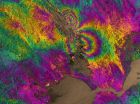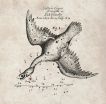(Press-News.org) (MEMPHIS, Tenn. -- MARCH 23, 2015) Research led by scientists at St. Jude Children's Research Hospital has identified key molecules that trigger the immune system to launch an attack on the bacterium that causes tularemia. The research was published online March 16 in Nature Immunology.
The team, led by Thirumala-Devi Kanneganti, Ph.D., a member of the St. Jude Department of Immunology, found key receptors responsible for sensing DNA in cells infected by the tularemia-causing bacterium, Francisella. Tularemia is a highly infectious disease that kills more than 30 percent of those infected, if left untreated. It can be readily transmitted by air, insect bites or through contaminated food or water.
"Understanding the fundamental biology of how our immune system works will lead to the development of more effective drugs and vaccines," said Kanneganti, corresponding author on the paper. The new findings also revealed how immune cells switch on genes that activate microbe-killing machinery called the AIM2 inflammasome.
The inflammasome is a complex of proteins that is a dedicated killing machine for bacteria and viruses. The inflammasome that attacks the tularemia bacterium is triggered by the sensor protein AIM2 that recognizes the tularemia DNA.
Previous studies indicate that both Francisella DNA and viral DNA activate AIM2 in the cell. The mystery was how different bacteria or viruses release their DNA into the infected cell to activate AIM2.
In the new studies, the researchers found that Francisella DNA is initially detected by a DNA sensor, cGAS, which specifically engages a gene-activating protein called IRF1 in the cell. Importantly, IRF1 triggers production of a group of proteins, called GBPs, that literally "mobs" the invading bacterium by surrounding and shredding it. The dying bacterium releases even more DNA and subsequently activates the DNA sensor AIM2 to further fuel the immune system, ultimately conquering the infection. Researchers still do not know whether GBPs directly kill bacteria or whether the GBPs require additional "help" to destroy them.
Studies with mice demonstrated the necessary role IRF1 plays in galvanizing the immune system to battle tularemia. Mice lacking IRF1 showed much higher levels of the bacteria when infected, and 100 percent succumbed to the infection, compared with only 25 percent of the mice that have IRF1. The new findings also showed that activation of the AIM2 inflammasome by the DNA virus cytomegalovirus does not involve IRF1, suggesting that the DNA of the invading microbes is presented to the cell in different ways.
According to the paper's first author, Si Ming Man, Ph.D., a postdoctoral fellow in St. Jude Immunology, the findings could lead to new protective treatments against tularemia, including drugs that can enhance the ability of IRF1, GBP or AIM2 to cure infections more quickly and effectively. Vaccines could also be developed that would boost this immune machinery and protect against the disease.
"Future studies will not only seek to further map the function of AIM2 in infectious diseases, but also to track its role in other disorders, including cancer," Man said. Studies of AIM2 could also aid in understanding some autoimmune diseases and cancers. Overactivation of AIM2 has been linked to disorders including psoriasis, an abdominal aortic aneurysm and lupus. Furthermore, reduced AIM2 activity has been linked to colorectal and prostate cancers.
INFORMATION:
The other authors are Rajendra Karki, R. K. Subbarao Malireddi, Geoffrey Neale and Peter Vogel, all of St. Jude; Masahiro Yamamoto, of Osaka University, Japan; and Mohamed Lamkanfi, of the Vlaams Instituut voor Biotechnologie and Ghent University, Belgium.
The research was funded in part by grants (AR056296, CA163507, AI101935) from the National Institutes of Health and ALSAC.
St. Jude Media Relations Contacts
Carrie Strehlau
Desk: (901) 595-2295
Cell: (901) 297-9875
carrie.strehlau@stjude.org
Summer Freeman
Desk: (901) 595-3061
Cell: (901) 297-9861
summer.freeman@stjude.org
St. Jude Children's Research Hospital
St. Jude Children's Research Hospital is leading the way the world understands, treats and defeats childhood cancer and other life-threatening diseases. It is the only National Cancer Institute-designated Comprehensive Cancer Center devoted solely to children. Treatments developed at St. Jude have helped push the overall childhood cancer survival rate from 20 percent to 80 percent since the hospital opened more than 50 years ago. St. Jude is working to increase the overall survival rate for childhood cancer to 90 percent in the next decade. St. Jude freely shares the breakthroughs it makes, and every child saved at St. Jude means doctors and scientists worldwide can use that knowledge to save thousands more children. Families never receive a bill from St. Jude for treatment, travel, housing and food--because all a family should worry about is helping their child live. To learn more, visit stjude.org or follow St. Jude at @stjuderesearch.
MAYWOOD, Ill. - No cures are possible for most patients who suffer debilitating movement disorders called cerebellar ataxias.
But in a few of these disorders, patients can be effectively treated with regimens such as prescription drugs, high doses of vitamin E and gluten-free diets, according to a study in the journal Movement Disorders.
"Clinicians must become familiar with these disorders, because maximal therapeutic benefit is only possible when done early. These uncommon conditions represent a unique opportunity to treat incurable and progressive diseases," first ...
Contrary to the statistician's slogan, in the quantum world, certain kinds of correlations do imply causation.
Research from the Institute for Quantum Computing (IQC) at the University of Waterloo and the Perimeter Institute for Theoretical Physics shows that in quantum mechanics, certain kinds of observations will let you distinguish whether there is a common cause or a cause-effect relation between two variables. The same is not true in classical physics.
Explaining the observed correlations among a number of variables in terms of underlying causal mechanisms, known ...
A surgical sedative may hold the key to reversing the devastating symptoms of a neurodevelopmental disorder found almost exclusively in females. Ketamine, used primarily for operative procedures, has shown such promise in mouse models that Case Western Reserve and Cleveland Clinic researchers soon will launch a two-year clinical trial using low doses of the medication in up to 35 individuals with Rett Syndrome.
The $1.3 million grant from Rett Syndrome Research Trust (RSRT) represents a landmark step in area researchers' efforts to create a true regional collaborative ...
When an earthquake hits, the faster first responders can get to an impacted area, the more likely infrastructure--and lives--can be saved.
New research from the University of Iowa, along with the United States Geological Survey (USGS), shows that GPS and satellite data can be used in a real-time, coordinated effort to fully characterize a fault line within 24 hours of an earthquake, ensuring that aid is delivered faster and more accurately than ever before.
Earth and Environmental Sciences assistant professor William Barnhart used GPS and satellite measurements from ...
In addition to antiretroviral medications, people with HIV may soon begin receiving a home exercise plan from their doctors, according to a researcher at Case Western Reserve University's Frances Payne Bolton School of Nursing.
"People with HIV are developing secondary chronic illnesses earlier and more frequently than their non-HIV counterparts," said Allison Webel, PhD, RN, assistant professor of nursing. "And heart disease is one for which they are especially at risk."
An estimated 1.2 million people nationally live with HIV, according to the Centers for Disease ...
Today, ACS is launching its first open access multidisciplinary research journal. Aspiring to communicate the most novel and impactful science developments, ACS Central Science will feature peer-reviewed articles reporting on timely original research across chemistry and its allied sciences. Free to readers and authors alike, original research content will be accompanied by additional editorial features.
These additional editorial features include news stories contributed by the Society's award-winning science journalists, invited topical reviews (called Outlooks) from ...
Young children who received the 4CMenB vaccine as infants to protect against serogroup B meningococcal disease had waning immunity by age 5, even after receiving a booster at age 3 ½, according to new research in CMAJ (Canadian Medical Association Journal)
Serogroup B meningococcal disease is the leading cause of meningitis and blood infections in developed countries. Infants and young children under the age of 5 years are especially at risk, and there is a second peak of cases in the late teenage years.
The multicomponent serogroup B meningococcal (4CMenB) ...
COLUMBUS, Ohio--Researchers at The Ohio State University have discovered how to control heat with a magnetic field.
In the March 23 issue of the journal Nature Materials, they describe how a magnetic field roughly the size of a medical MRI reduced the amount of heat flowing through a semiconductor by 12 percent.
The study is the first ever to prove that acoustic phonons--the elemental particles that transmit both heat and sound--have magnetic properties.
"This adds a new dimension to our understanding of acoustic waves," said Joseph Heremans, Ohio Eminent Scholar ...
New observations made with APEX and other telescopes reveal that the star that European astronomers saw appear in the sky in 1670 was not a nova, but a much rarer, violent breed of stellar collision. It was spectacular enough to be easily seen with the naked eye during its first outburst, but the traces it left were so faint that very careful analysis using submillimetre telescopes was needed before the mystery could finally be unravelled more than 340 years later. The results appear online in the journal Nature on 23 March 2015.
Some of seventeenth century's greatest ...
New Haven, Conn. -- A Yale-led team has identified a promising new combination immunotherapy to enhance the body's ability to fight chronic viral infections and possibly cancer.
Their study was published March 23 in Nature Medicine.
Viruses that cause chronic infection, such as HIV and Hepatitis B and C, are able to persist in the body despite attack from T cells, the body's main line of defense against pathogens. They persist because, over time, our T cells weaken to the point of "T-cell exhaustion." To circumvent this process, the research team -- led by Susan Kaech, ...

